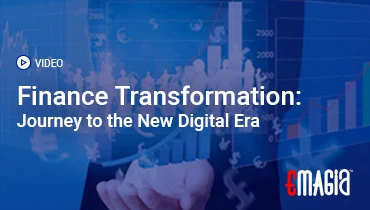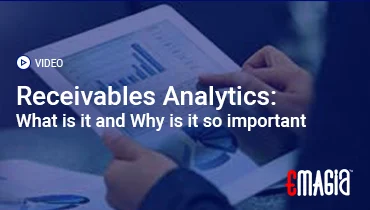In the vast and intricate world of finance, banks play a pivotal role, acting as intermediaries that facilitate economic activity by lending money. From mortgages and business loans to personal credit lines, lending is their core business. However, with every loan extended comes an inherent danger: the possibility that the borrower might not repay the debt as agreed. This fundamental threat, known as credit risk, is the most significant challenge facing any lending institution. Unmanaged, it has the potential to erode profits, destabilize balance sheets, and even trigger widespread financial crises.
Imagine a bank without robust safeguards against loan defaults. Its capital would quickly diminish, its ability to lend would cease, and public trust would evaporate. This is precisely why credit risk management is not just a regulatory formality but the very bedrock of a bank’s survival and success. It’s an ongoing, dynamic process that involves intricate strategies, advanced analytical tools, and a vigilant eye on ever-changing economic landscapes.
So, what is credit risk management in the context of banking, and how do financial institutions systematically identify, assess, mitigate, and monitor the risk of borrower default? This comprehensive guide will delve deep into the sophisticated world of bank credit risk management. We’ll explore the multi-faceted credit risk management process, detailing the frameworks, techniques, and technologies banks employ to protect their assets, ensure stability, and maintain the public’s confidence in the financial system. Get ready to uncover the crucial strategies that keep the wheels of modern finance turning securely.
Understanding Credit Risk in Banking: The Core Challenge
To appreciate the complexities of managing credit risk, it’s essential to grasp its fundamental definition and pervasive impact within the banking sector.
What is Credit Risk? The Threat of Default
Credit risk is essentially the risk that a borrower will fail to meet their contractual obligations to a lender, resulting in financial loss for the lender. This can take many forms: a consumer defaulting on a credit card payment, a business failing to repay a loan, or a counterparty in a derivatives transaction not honoring their side of the agreement. It’s the exposure to loss if a counterparty defaults. Understanding what is credit risk management begins with this fundamental definition.
The severity of the loss depends on various factors, including the amount owed, the value of any collateral, and the recovery rate. This inherent uncertainty makes credit risk in banking the most critical risk category, requiring continuous and proactive managing credit risk strategies.
Types of Credit Risk: A Granular View of Exposure
Credit risk isn’t monolithic; it manifests in different forms that banks must carefully assess:
- Default Risk: The most direct type, where a borrower completely fails to make scheduled payments or repays the principal.
- Credit Migration Risk (or Downgrade Risk): The risk that a borrower’s credit quality will deteriorate, leading to a downgrade in their credit rating and potentially increasing the likelihood of future default.
- Concentration Risk: The risk arising from too much exposure to a single borrower, industry, geographic region, or type of collateral. A downturn in one concentrated area can severely impact the bank’s portfolio.
- Counterparty Risk: The risk that a party to a financial contract (e.g., in derivatives, foreign exchange) will default on their obligations before the final settlement.
Effective credit risk management practices require identifying and mitigating each of these types of credit risk.
Why is Credit Risk Management Crucial for Banks? Beyond Profitability
Credit risk management is paramount for banks, extending far beyond simple profitability:
- Protecting Capital: Unrecovered loans directly erode a bank’s capital base, impacting its solvency and ability to absorb future losses.
- Ensuring Liquidity: Defaults can lead to cash flow shortages, making it difficult for banks to meet their own obligations or fund new loans.
- Maintaining Public Trust: Public confidence in the banking system is fragile. Loan losses can trigger widespread concern, leading to bank runs or financial crises.
- Regulatory Compliance: Regulators impose strict capital requirements (e.g., Basel Accords) and demand robust credit risk management frameworks to ensure systemic stability. Failure to comply can result in severe penalties.
- Driving Profitability: While credit risk mitigation involves costs, effective management ensures that the returns from lending outweigh the losses, leading to sustainable profitability.
These factors underscore why how banks manage credit risk is central to financial stability.
The Credit Risk Management Process: A Systematic Approach
Managing credit risk in a bank is not a one-off event; it’s a continuous, multi-stage credit risk management process that spans the entire lifecycle of a loan, from origination to maturity or recovery. This systematic approach is the cornerstone of effective bank credit risk management.
1. Credit Risk Policy and Strategy: Setting the Foundation
The first step involves establishing the bank’s overall credit risk policy and strategy. This defines the bank’s risk appetite, target markets, acceptable risk levels, and the general framework for lending decisions. It sets the tone for all subsequent activities and is the basis of any enterprise credit risk management approach.
- Risk Appetite Statement: A formal document outlining the maximum level of credit risk the bank is willing to undertake, aligned with its strategic objectives and capital base.
- Lending Guidelines: Broad rules defining eligible borrowers, industries, loan types, and maximum exposure limits.
2. Credit Risk Assessment and Underwriting: Evaluating Borrowers
This is the critical stage where individual loan applications are evaluated to determine the borrower’s creditworthiness and the specific risk associated with the proposed loan. This is central to credit risk management practices.
- Borrower Analysis: In-depth review of the borrower’s financial statements, business model, industry outlook, management quality, and repayment capacity. For consumers, this involves credit scores and debt-to-income ratios.
- Credit Risk Models: Use of quantitative credit risk models (statistical models, scorecards, AI/ML models) to assess the probability of default (PD), loss given default (LGD), and exposure at default (EAD).
- Collateral Valuation: If collateral is involved, its value and liquidity are assessed.
- Environmental, Social, and Governance (ESG) Factors: Increasingly, banks integrate ESG considerations into credit risk assessment to evaluate long-term sustainability and potential risks.
- Loan Structuring: Designing the loan terms (interest rate, tenor, covenants, repayment schedule, collateral requirements) to align with the borrower’s risk profile and the bank’s risk appetite.
3. Loan Approval and Documentation: Formalizing the Agreement
Once the credit risk assessment is complete, the loan undergoes an approval process, often involving multiple levels of authority based on the loan amount and risk profile. Proper legal documentation is essential to ensure the loan is enforceable and the bank’s rights are protected.
4. Portfolio Management and Monitoring: Active Oversight
After a loan is disbursed, managing credit risk shifts to continuous monitoring of the entire loan portfolio, not just individual loans. This is where credit risk solutions are applied on a larger scale.
- Ongoing Borrower Monitoring: Regular review of borrower financial health, market conditions, and adherence to loan covenants. This helps identify early warning signs of deterioration.
- Portfolio Diversification: Ensuring the loan portfolio remains diversified across industries, geographies, and borrower types to minimize concentration risk.
- Credit Limit Management: Enforcing individual and aggregate credit limits to control exposure.
- Stress Testing: Periodically subjecting the entire loan portfolio to hypothetical adverse economic scenarios to assess its resilience and potential losses. This is a crucial credit risk management technique.
5. Credit Risk Mitigation Techniques: Reducing Exposure
Banks employ various strategies to reduce their exposure to credit risk, even after a loan is originated.
- Collateralization: Requiring borrowers to pledge assets (e.g., real estate, inventory, equipment) that the bank can seize and sell if default occurs. Effective credit risk mitigation involves proper valuation and legal enforceability of collateral.
- Guarantees: Obtaining guarantees from third parties (e.g., parent company, government agencies) who agree to repay the loan if the primary borrower defaults.
- Credit Derivatives: Using financial instruments like credit default swaps to transfer credit risk to another party.
- Loan Syndication and Participations: Distributing portions of large loans among multiple banks to share the risk and reduce individual exposure.
- Covenants: Including specific conditions in loan agreements that borrowers must adhere to (e.g., maintaining certain financial ratios, not taking on excessive new debt). Breaching these can trigger early repayment clauses.
These are practical credit risk strategies to safeguard investments.
6. Impairment and Provisioning: Accounting for Potential Losses
Banks are required to recognize potential loan losses in their financial statements. This involves:
- Identifying Impaired Loans: Loans where there is objective evidence that the bank will not be able to collect all amounts due.
- Making Provisions: Setting aside funds (creating loan loss reserves) to cover expected losses from these impaired loans. This impacts profitability but ensures financial prudence.
7. Collections and Workout Strategies: Recovering from Default
When a borrower defaults, the focus shifts to recovery and minimizing losses. This is the final stage of the credit risk management process.
- Early Delinquency Management: Proactive outreach to borrowers who are slightly overdue to understand the situation and encourage payment.
- Loan Restructuring and Workouts: For distressed but viable borrowers, negotiating new payment terms or modifying loan agreements to help them recover and avoid full default.
- Foreclosure and Legal Action: As a last resort, taking legal action to seize and sell collateral or pursue legal remedies to recover outstanding debt.
These strategies are crucial for minimizing losses and maintaining the health of the loan book, central to what is credit risk management in practice.
Regulatory Frameworks and Governance for Bank Credit Risk Management
The global financial crisis underscored the critical importance of robust credit risk management frameworks and strong regulatory oversight. Banks operate within a strict environment designed to ensure their stability and protect the broader financial system.
The Basel Accords: Global Standards for Capital Adequacy
The Basel Accords (Basel I, II, III) are international banking regulations issued by the Basel Committee on Banking Supervision. They provide a comprehensive credit risk management framework focusing on capital adequacy requirements, ensuring banks hold sufficient capital to cover their credit risks. They define how banks calculate risk-weighted assets (RWAs) for different exposures, influencing lending practices and capital allocation.
These accords have significantly shaped credit risk management in banks globally, pushing for more sophisticated credit risk models and data analysis.
Internal Governance and Risk Culture: Beyond Compliance
Effective bank credit risk management goes beyond simply complying with regulations. It requires strong internal governance and a robust risk culture:
- Board Oversight: The board of directors is ultimately responsible for setting the bank’s risk appetite and overseeing the enterprise credit risk management function.
- Independent Risk Function: Establishing an independent credit risk management department, separate from the business units that originate loans, to ensure objective assessment and monitoring.
- Clear Roles and Responsibilities: Defining clear lines of accountability for managing credit risk at all levels of the organization.
- Risk Culture: Fostering a culture where all employees understand and prioritize credit risk management practices in their daily activities.
- Credit Risk Reporting: Regular, transparent reporting on credit risk exposure, portfolio quality, and performance against risk limits to senior management and the board.
This internal strength is paramount for sustainable credit risk solutions.
Leveraging Technology: The Future of Credit Risk Management
The complexity and volume of credit risk data necessitate advanced technological solutions. Modern credit risk management system platforms are transforming how banks assess and mitigate risk.
Data Analytics and Big Data: Deeper Insights
Banks leverage vast amounts of internal (historical loan performance, payment behavior) and external data (economic indicators, industry trends, news sentiment) to gain deeper insights into credit risk. Big data analytics allows for more granular segmentation of portfolios and identification of subtle risk factors, enhancing credit risk analysis.
Artificial Intelligence and Machine Learning (AI/ML): Predictive Power
AI and ML are revolutionizing credit risk assessment through:
- Predictive Models: Developing more accurate credit risk models that forecast probability of default (PD) or loss given default (LGD) with greater precision, going beyond traditional statistical methods.
- Automated Underwriting: Streamlining the loan application and approval process for certain loan types by automating data collection, validation, and even initial credit decisions based on AI algorithms.
- Anomaly Detection: Identifying unusual patterns in payment behavior or financial data that might indicate emerging risk or fraud.
- Natural Language Processing (NLP): Analyzing unstructured data from news articles, social media, or management discussions to glean insights into borrower health.
These advanced tools significantly enhance credit risk management strategies.
Dedicated Credit Risk Management Software: Integrated Platforms
Banks are increasingly investing in comprehensive credit risk management software solutions. These integrated platforms provide functionalities for:
- Loan origination and underwriting.
- Portfolio monitoring and analytics.
- Stress testing and scenario analysis.
- Regulatory reporting and compliance.
- Credit risk mitigation tracking.
These solutions centralize credit risk data, streamline workflows, and enhance the overall credit risk management system.
Digitalization of Credit Processes: End-to-End Efficiency
Beyond specific tools, the broader digitalization of credit processes—from online loan applications to automated documentation and real-time monitoring dashboards—is crucial. This creates end-to-end efficiency, reduces manual errors, and provides real-time visibility for managing credit risk effectively.
Emagia: Empowering Proactive Credit Risk Management with AI-Powered Solutions
In the high-stakes world of banking and corporate finance, robust credit risk management is not just a regulatory mandate but the bedrock of sustainable growth and profitability. Emagia’s AI-powered Order-to-Cash (O2C) platform is meticulously designed to provide leading-edge credit risk solutions, transforming how businesses assess, monitor, and mitigate credit exposure, thereby fundamentally strengthening their bank credit risk management capabilities.
Emagia centralizes and unifies all your critical financial data – from customer credit applications and historical payment behaviors to external credit bureau scores and internal sales data. Our cutting-edge Artificial Intelligence and Machine Learning algorithms intelligently analyze this vast amount of information, acting as a sophisticated credit risk management system. This enables highly accurate and automated credit risk assessment through AI-driven credit risk models. Imagine instantly assessing the probability of default for new and existing customers, predicting potential delinquencies, and identifying early warning signs of deteriorating credit quality long before they become significant problems. Our platform provides dynamic credit scoring, continuous credit monitoring, and proactive alerts for any shifts in a customer’s risk profile, going far beyond traditional, static credit checks.
Beyond intelligent credit risk analysis, Emagia provides enterprise credit risk management capabilities by offering comprehensive credit risk management software. Our system automates credit policy enforcement, streamlines the credit approval process, and provides real-time visibility into your entire credit portfolio. This allows for proactive credit risk mitigation strategies, such as automated credit limit adjustments based on evolving risk, or tailored communication strategies for at-risk accounts. By partnering with Emagia, you’re not just managing credit risk; you’re gaining an intelligent financial partner that empowers smarter, data-driven credit decisions, optimizes working capital, minimizes bad debt, and ensures the financial stability and strategic growth of your business by mastering the complexities of how banks manage credit risk in a truly proactive and intelligent manner.
Frequently Asked Questions (FAQs) About How Banks Manage Credit Risk
What is credit risk management in banking?
Credit risk management in banking is the systematic process by which financial institutions identify, assess, monitor, and mitigate the risk of loss resulting from a borrower’s failure to repay a loan or meet contractual obligations. It’s crucial for protecting the bank’s capital and ensuring financial stability.
What are the main types of credit risk banks face?
The main types of credit risk banks face include: Default Risk (borrower fails to repay), Credit Migration Risk (borrower’s credit quality deteriorates), Concentration Risk (excessive exposure to a single borrower, industry, or region), and Counterparty Risk (a party to a financial contract defaults).
How do banks perform credit risk assessment?
Banks perform credit risk assessment through a detailed analysis of the borrower’s financial health, business model, industry conditions, and repayment capacity. They use credit risk models (including statistical and AI/ML models), credit scores, debt-to-income ratios, and evaluate any collateral offered. This is a key step in managing credit risk.
What are some common credit risk mitigation techniques?
Common credit risk mitigation techniques include: requiring collateral (assets pledged by the borrower), obtaining third-party guarantees, using credit derivatives to transfer risk, syndicating loans (sharing risk with other banks), and including restrictive covenants in loan agreements.
What role do credit risk models play in bank credit risk management?
Credit risk models play a crucial role by providing quantitative assessments of creditworthiness. They use statistical analysis and often AI/ML to calculate the Probability of Default (PD), Loss Given Default (LGD), and Exposure at Default (EAD), helping banks make data-driven lending decisions and forecast potential losses for managing credit risk effectively.
How do regulatory frameworks like the Basel Accords impact credit risk management in banks?
Regulatory frameworks like the Basel Accords significantly impact credit risk management in banks by setting international standards for capital adequacy. They mandate how banks must calculate and hold capital against their credit exposures, encouraging more sophisticated credit risk management practices and robust internal controls to ensure financial stability.
Can technology, specifically AI and ML, help how banks manage credit risk more effectively?
Yes, technology, especially AI and ML, significantly helps how banks manage credit risk more effectively. They enable more accurate predictive analytics for default, automate aspects of underwriting and monitoring, identify data anomalies that signal risk, and enhance credit risk analysis by processing vast amounts of data, leading to more proactive and intelligent credit risk strategies.
Conclusion: Safeguarding the Financial System Through Proactive Credit Risk Management
As we’ve thoroughly explored, managing credit risk is the paramount challenge for banks, extending far beyond the boardroom into the very fabric of global financial stability. The question of How Do Banks Manage Credit Risk? is answered through a systematic, multi-layered approach that constantly adapts to economic shifts and technological advancements.
From establishing stringent credit risk policies and conducting thorough credit risk assessments to actively managing diversified portfolios and employing sophisticated credit risk mitigation techniques, every stage of the credit risk management process is designed to protect capital and ensure liquidity. Coupled with robust regulatory frameworks like the Basel Accords and powered by cutting-edge credit risk management software leveraging AI and Machine Learning, banks are continuously enhancing their ability to identify, measure, monitor, and control credit exposures with unprecedented precision.
Ultimately, a strong commitment to proactive bank credit risk management is not merely about compliance or avoiding losses; it’s about building resilient financial institutions that can confidently fuel economic growth, maintain public trust, and navigate the inherent uncertainties of lending, securing a stable future for the entire financial ecosystem.



